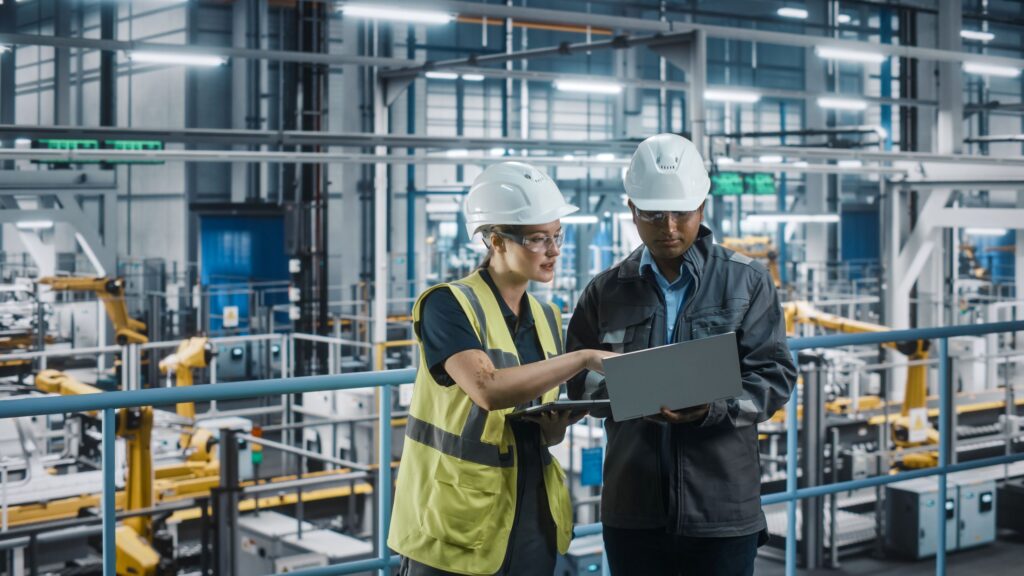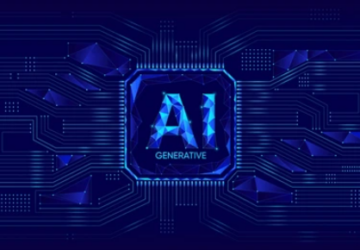Information sharing is at the heart of the digital transformation of businesses, and this issue is particularly pressing in the industrial sector: given the avalanche of data that each industrial project generates, traditional methods designed around the concept of documents prove to be ineffective. Managing complexity requires a more agile approach.
To avoid the pitfalls of information fragmentation in industrial projects, it is necessary to rethink information sharing and move from exchanging documents (paper or digital) to collaborative work on a digital twin. Focus on a fundamental issue for the management of industrial projects.
From data silos to information fragmentation.
The volume of data produced within the framework of an industrial project is immense. Historically, this data produced for an industrial project only existed in paper form: specifications, project description, budgetary status… and of course the drawings and models, among which we find the famous blueprints.
The development of computing has transformed the management of information in industrial projects, bringing as many solutions as new problems. The generalization of 3D modeling has greatly enriched the design phase, but has led to a multiplication of file formats: OBJ, FBX, COLLADA, 3DS, IGES, STL, OCX, 3DXML… to name just a few! The reason for this is the profusion of software on the market, meeting the varied needs of all industrial sectors.
In parallel with this digital expansion, the paper document still exists. For example, during the classification phase, the 3D models created in CAD are transposed into 2D blueprints for analysis and calculations, which then lead to new 3D models, which are in turn transposed into 2D… These lengthy iterative processes between design offices and classification bodies multiply the number of versions, and therefore the design time and the risk of errors.
In short, digital transformation has resulted in the development of data silos, leading to information fragmentation. For these reasons, information sharing in industrial projects is characterized by great complexity: data of heterogeneous quality are locked away in countless file versions, which are scattered throughout the information systems of the project’s participants.
The solution to this problem lies in rationalizing information sharing. This is precisely what a collaborative digital twin allows to do.

The collaborative digital twin: the cornerstone of the “paperless” construction site
The digital transformation of industrial project management goes far beyond the issue of paper or computer support for documents. Beyond environmental issues in which the “paperless” goal is set, it’s about addressing the challenges of information sharing and facing the challenges related to the complexity of modern industrial sites.
From this perspective, the digital twin, designed as a collaborative work platform, represents a paradigm shift in information management within industrial projects.
A persistent single repository: a single source of truth.
Designed as a single workspace, the collaborative digital twin integrates all project data, regardless of their producer and format. Design offices, subcontractors, suppliers… all project stakeholders enrich the digital twin with the data they produce.
And since there is only one digital twin that is updated in real time, it serves as a persistent unique reference. All users view the same copy and constantly work on the “original”, considered as the single source of truth.
The lack of fragmentation over time ensures that the consulted data is always up to date: each party can work in parallel without creating any “interference” on the digital twin. This approach also eliminates the problem of dead data: all additions and enrichments are made directly in the unique repository.
Finally, organizing an industrial project on a collaborative digital twin allows data to be centralized and therefore protected against risks of loss, theft, or accidental or intentional destruction, thus providing guarantees of continuity and confidentiality.
Visualize all dimensions of the data.
Unlike traditional methods of information sharing, the digital twin allows for visualizing all dimensions of a project. While paper is limited to 2D and digital documents to 3D, the digital twin incorporates all project dimensions: spatial dimensions (X, Y, Z), but also time, budget, materials, thicknesses, etc. The collaborative digital twin is not just an evolving 3D model; it’s a platform integrating all project data.
This multidimensional approach to the industrial project provides dynamic visualization: the user chooses the display modalities based on the task at hand and its specifics. The collaborative digital twin also paves the way for immersive visualization, allowing non-technical operators on-site to view information they need in augmented or virtual reality.
Unlocking the potential of real-time collaborative work.
The collaborative digital twin reveals the true potential of collaborative work. By allowing direct exchanges between the different stakeholders, it breaks down traditional silos and maximizes the quality of the information exchanged. The result?
This organization encourages direct exchanges in the form of quick iterations and maximizes the quality of the information exchanged. The absence of duplicates significantly reduces repetitions, errors, and rework, leading to a notable optimization of operational efficiency.
The digital transformation of the industrial sector is not just about moving from paper to digital. It calls for a rethinking of information management. The collaborative digital twin, by offering a unique and reliable source of data, allows us to surpass the limitations of traditional methods. Its ability to integrate and visualize all dimensions of a project, combined with its potential for real-time collaborative work, make it a valuable tool to remain competitive and meet the challenges of Industry 4.0.
Better understand the possibilities of SmartShape?
Schedule a demo

